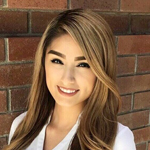Resources - Blog
2021 E-Commerce Tech Trends to Know

Stay on top of the latest e-commerce and marketplace trends.
The e-commerce industry transformed this year due to the COVID-19 pandemic. Consumers gained a newfound appreciation for e-marketplaces, which led many brands and retailers to further invest in their e-commerce strategy. As we head into 2021, investing in technology should be a priority for your business to provide consumers an elevated shopping experience and improve your company’s operations.
Brands and retailers have been leveraging more innovative tools to remain competitive, meet consumer needs, and automate tasks. Features like augmented reality (AR), artificial intelligence (AI), and bots are expected to become prominent in digital stores. Below are five emerging tech trends to look out for in 2021.
1. Enhanced User Experience (AR and AI)
As more consumers are purchasing goods from e-marketplaces, brands and retailers are focusing on improving their customers’ user experience and increasing personalization. It is projected that more than 120,000 stores will be using AR technology worldwide in 2022. Furthermore, retailers are also projected to spend $7.3 billion on AI by 2022, according to a study from Juniper Research.
Brands and retailers have already started implementing AR and AI technology into their business strategies, and these functionalities are anticipated to evolve in the new year. For instance, Amazon launched Luxury Stores, which features the View in 360 tool. The tool generates a 360-degree view of a garment and demonstrates how the clothing would look on a variety of body types and skin tones to provide an interactive shopping experience. Amazon also rolled out a Room Decorator tool this year to help shoppers envision how furniture would look in their home before making a purchase.
Sephora, H&M, Aerie, and many more brands are leveraging AI by offering chatbots on their websites. The chatbot service provides shoppers with 24/7 customer service, product recommendations, the ability to book appointments, receive special discounts, and more. Chatbots and other AI tools are predicted to increase in popularity, as they offer consumers a more personalized and engaging experience.
2. The Rise of Voice Commerce
Voice commerce is on the rise, since consumers are turning to their voice assistant devices more frequently to make purchases. Three-quarters (75%) of U.S. households will have smart speakers by 2025, per Loup Ventures data. The sales from voice commerce are expected to reach $40 billion by 2022.
Consumers are using Alexa through Amazon Echo and Google Assistant through Google Home to order items online. Amazon and Google are expanding the regional languages of their voice assistants to help a broader range of consumers use their devices, which includes its shopping feature. It is not surprising that buyers enjoy purchasing items through a voice assistant as the technology grows in accuracy and offers a convenient, hands-free shopping experience. Considering the growth of voice commerce, brands and retailers should optimize their digital stores for voice search.
3. Video Will Emerge in Online Retail
Video has been leveraged more prominently throughout a variety of businesses and is anticipated to emerge in e-commerce in the years to come. The majority (84%) of consumers said that they have been convinced to buy a product or service by watching a brand’s video, per Wyzowl data. Additionally, 93% of marketers report they have gained new customers through video on social media.
Brands and retailers who use video content as part of their e-commerce strategy offer consumers an immersive and in-depth view of their products. Video also showcases a brand’s creativity and personality, which can help them establish a greater connection with their target audience. E-commerce companies have begun partnering with social media platforms, such as Shopify with TikTok, to enable consumers to view video content and shop directly on the app. Given the emerging use of video by brands and retailers this year, it is projected the media option will have a greater role in e-commerce by 2021.
4. Innovative Payment Options
The payment options a retailer offers can alter whether a consumer decides to purchase from their business or not. Consumers are increasingly using digital wallets, as it provides a seamless payment experience. The use of digital wallets is forecasted to have an annual growth rate of 26.93% between 2020–2025, according to a report by Mordor Intelligence.
Many brands and retailers accept digital wallets as a payment method, in addition to debit and credit cards. Digital wallets include PayPal, Apple Pay, Google Pay, Samsung Pay, AliPay, and more. Some e-commerce companies are even beginning to accept cryptocurrencies, such as Bitcoin, since it offers low transaction fees. Overstock, for example, has partnered with Coinbase (a Bitcoin platform) to accept bitcoin as a form of payment from its customers. Retailers who are not currently accepting digital wallets should begin offering the option to draw in more shoppers.
5. Anti-Scalping Bot Technology
Scalping bots are harmful to brands and retailers due to the distorted data it produces and by preventing shoppers from purchasing highly sought-after products. 60%–70% of all traffic to checkout pages are made up of malicious bots, per a report by Javelin Strategy & Research. It was also detected that there were 8.1 billion bot requests between Thanksgiving and Cyber Monday this year, according to PerimeterX.
Scalper bots are software programs that are designed to automate online purchases. Since the bots can complete transactions faster than consumers, the software is able to secure high-demand products and resell them at a higher price. More brands and retailers are leveraging anti-scalping bot technology since the pandemic skyrocketed online shopping. It is anticipated that more e-commerce companies will build their own bots or purchase a protection solution next year as the shift towards e-marketplaces continues.
Final Thoughts
The COVID-19 pandemic disrupted the e-commerce landscape. Consumers are now purchasing goods online more than ever before. Brands and retailers should invest in technology to provide consumers an enhanced digital shopping experience and refine their security measures.
E-commerce companies are currently implementing more technological features to gain a competitive advantage, improve their offerings, and set up self-operating software. An optimized user experience (which includes AR and AI), voice commerce, video, digital wallets, and anti-scalping bot technology are e-commerce tech trends expected to emerge in 2021.
Learn what Feedvisor can do for your business.
When you partner with Feedvisor, you automatically receive access to our true, AI-driven technology and hands-on team of e-commerce experts. Contact one of our team members today to learn more about our end-to-end solution for brands and large sellers on Amazon, Walmart, and e-marketplaces.




